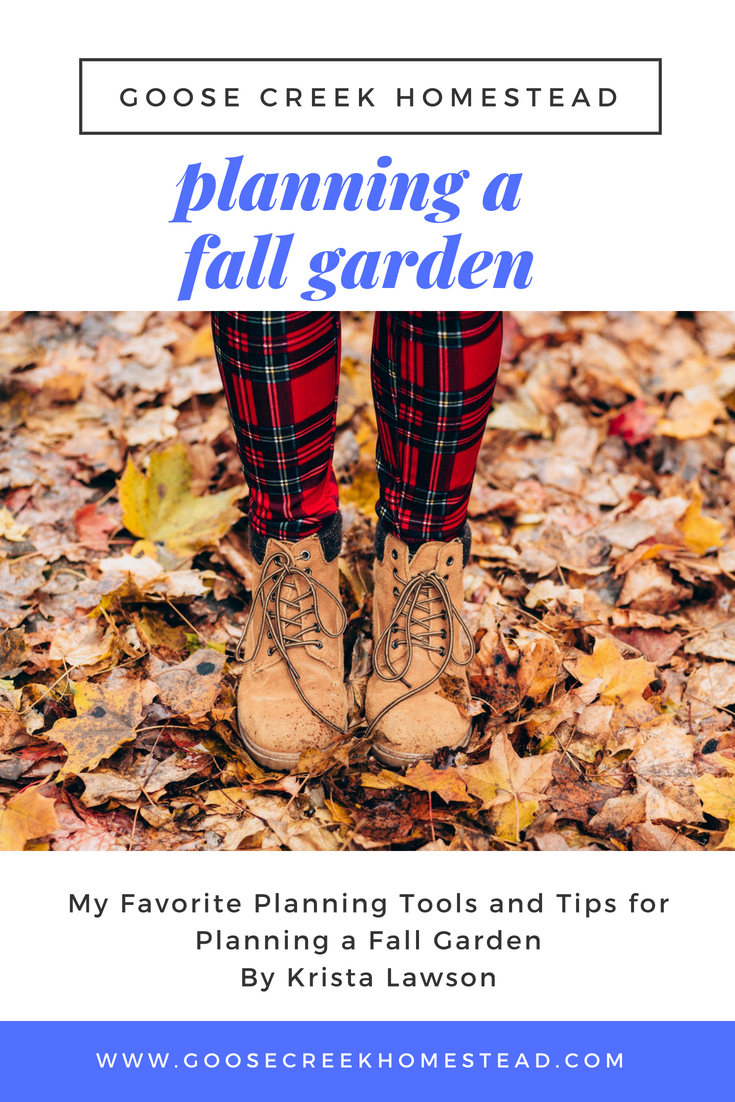As your summer garden begins to produce a harvest, the time to plan your fall garden begins. Once you figure out the plants you want, you have to figure out when to plant your fall garden. Just like spring planting, timing is important and will determine the success of your crops.
One of the first things to think about is when to plant. Everyone understands how to plant spring and summer crops, but fall planting isn’t as common. It isn’t difficult; here is the information you need to know.
Find Your First Frost Dates
Spring planting depends on your final frost day, and fall planting depends on the first frost date. The best way to find your first frost date is to use a calculator online and punch in your zip code.
Dave’s Garden offers an easy-to-use frost calculator. It will give you your average dates that have a risk of frost, and it will tell you the dates when you will certainly have frost. This information shows you the length of your growing season.
In most USDA Hardiness Zones, the first frost arrives between September and October, which means mid-July to mid-August are the prime time for fall veggie planting.

Look at the Available Sunlight Hours
Everyone knows the amount of sun available throughout the year varies. Summer brings more daylight than the winter months. One of the most limiting factors of plant growth during the winter, aside from cold temperatures, is shorter days. Plants require at least 10 hours of daylight for active growth.
The time without 10 hours of daylight is called “Persephone Days” which refers to the time when the vegetation goddess returns to Hades in the winter. One of the keys to a successful fall garden is to plan for your days to reach maturity when the Persephone Days begin. You will plant your vegetables early enough that you can harvest them by these days.
Don’t worry; you don’t have to guess when you stop having 10 hours of daylight randomly! The United States Naval Observatory has an online tool that provides you with a daylight table for any location in the world. It’s a handy tool that every garden should use.

How to Determine When to Start Your Fall Garden
1. Make a Plant List
The first step is to determine what your family eats and what you want to plant. Fall gardening is a great way to increase your bounty of particular veggies your family loves the most. Don’t waste your time or garden space on veggie no one eats.
A lot of different plants do well in the fall, but some popular picks are:
- Lettuce
- Spinach
- Kale
- Peas
- Carrots
- Beets
- Brussel Sprouts
- Cabbage
- Broccoli
- Cauliflower
2. Create a Chart
Success is going to take proper planning, so make a chart with all of the varieties you want to plant. On your chart, you are going to include the variety, particular instructions necessary, days to maturity, date to plant, and succession planting intervals.
3. Look at the Days to Maturity
Every seed packet lists the days to maturity, which is the average amount of days it will take for your plant to reach the ability to harvest. Remember that this date is particularly important for fall gardening because you want to use this timing to count backward from your average Persephone Days!
Chances are your Persephone Days will happen after the first frost date. You can use row covers to ensure the frost doesn’t damage your plants.
4. When to Start the Seeds
On the seed packets, you’ll also find other valuable information, such as when you need to start the seeds. The directions might tell you to “start indoors 6 to 8 weeks before planting outside,” or “sow 10 to 12 weeks before the first frost.”
This information is important and is necessary to understand when to plant your fall garden. For example, the beets you love need to be sowed 6 to 8 weeks before the first frost. So, you take the first frost date that you found in the beginning and count back six to eight weeks. Because beets are frost tolerant and you can cover if there is one, plant them 60 days before your first frost date.
5. Think About Succession Planting
One of the last things to consider is which crops you would want to sow in succession to have a larger harvest window. Several veggies are great for succession plantings, such as kale, lettuce, carrots, and spinach. You sow the seeds every two weeks. Some plants, like kale, can be sown every two weeks until the first frost, providing you a long harvest of fresh greens.
If you want to use succession planting, make sure you keep track! Use a calendar to note when you planted what crop and in what bed.

It’s Time to Get Started
Figuring out when to plant a fall garden requires a bit of planning, but it becomes easier with the right information. Once you have a list of the crops you want to plant, know your first frost, and understand your daylight hours, use your calendar to count back and making a planting calendar. You are on your way to a bountiful, fall harvest!
Read next: Preserving The Harvest: Essential Supplies For Canning, Freezing, And Dehydrating

